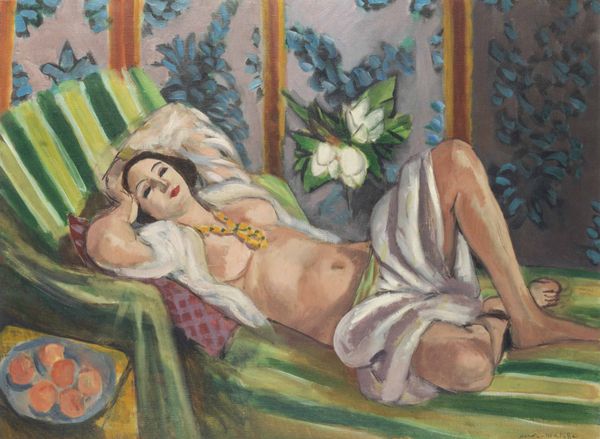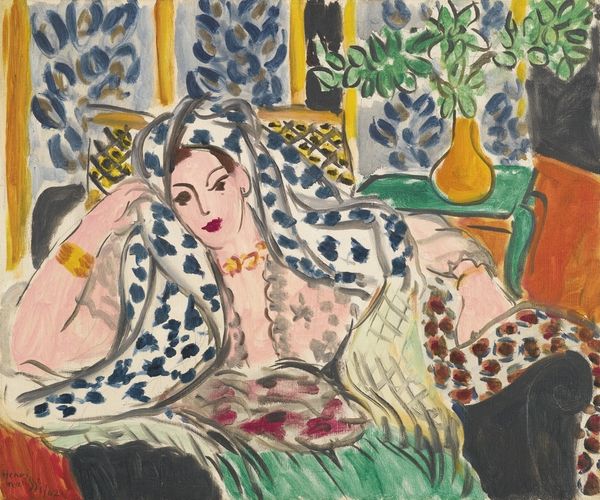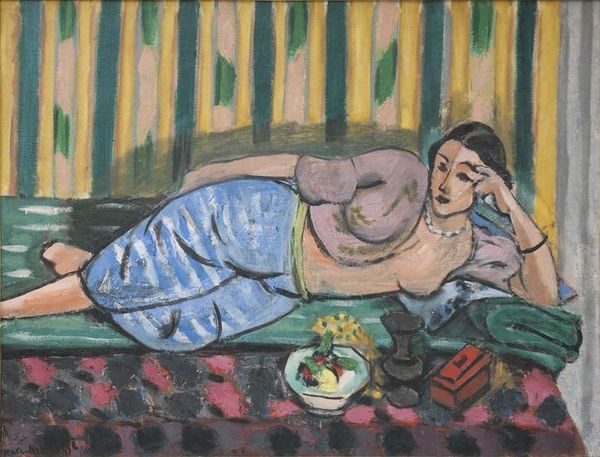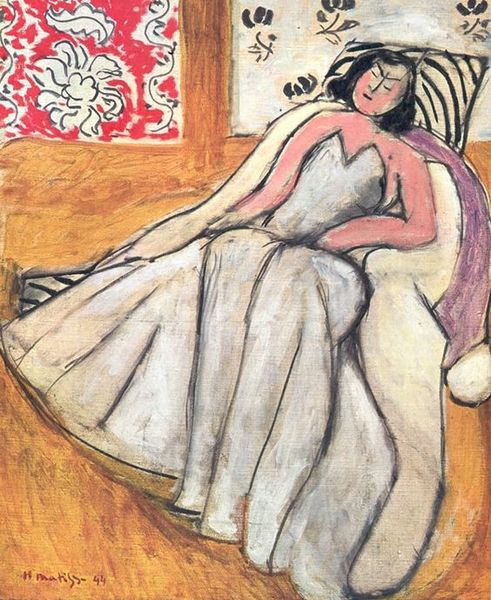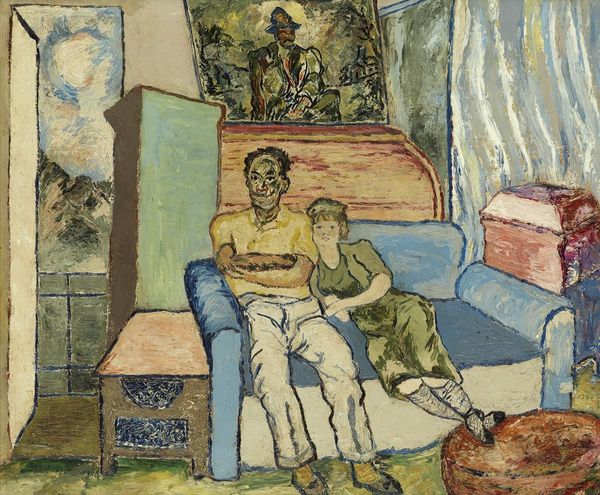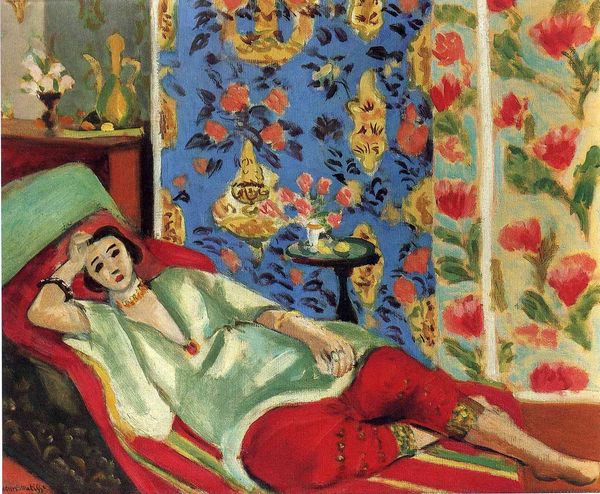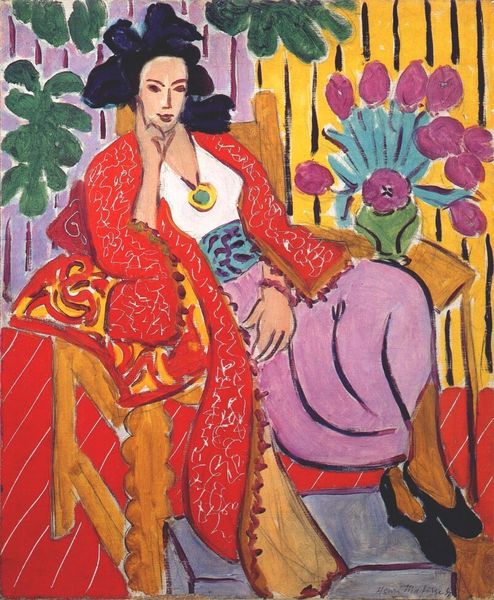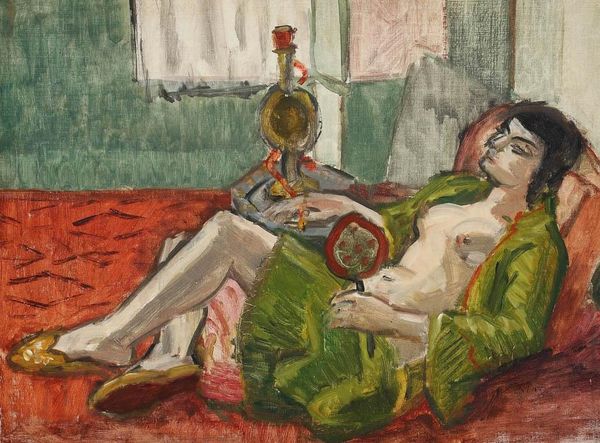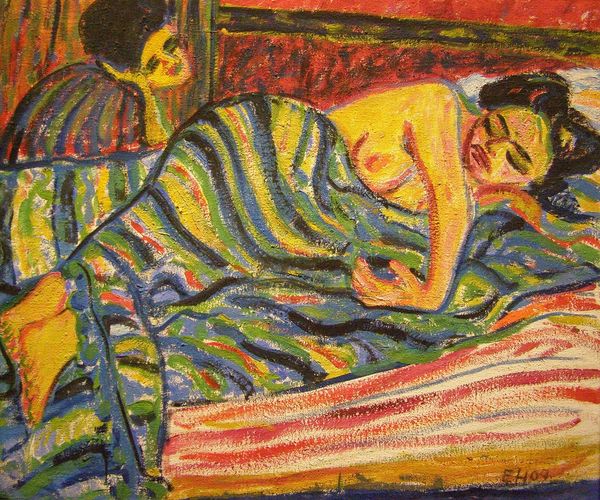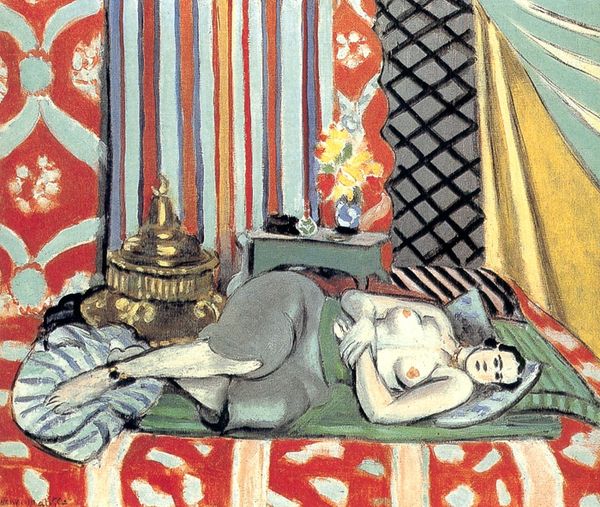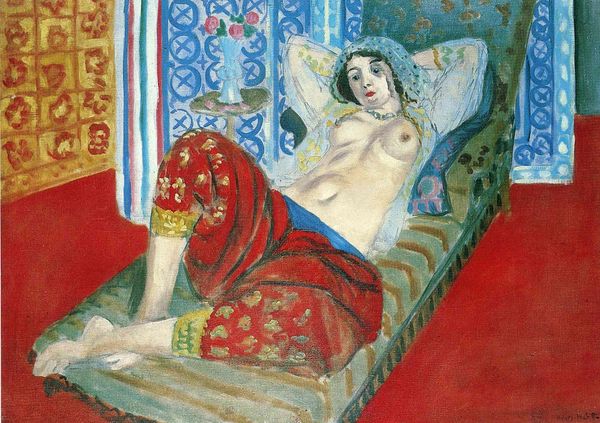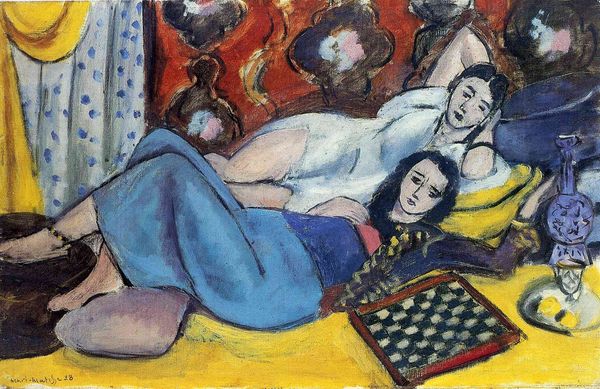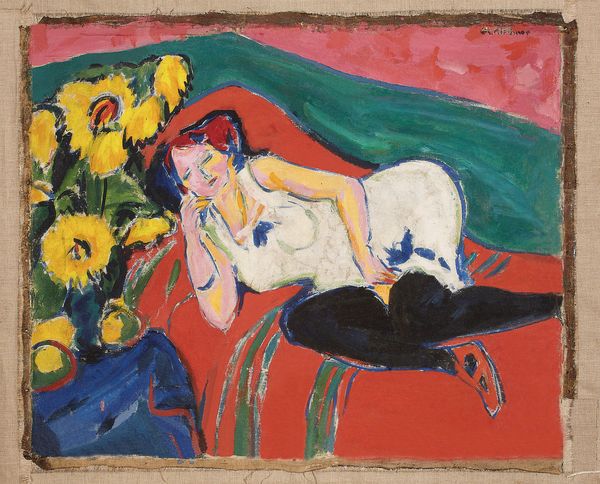
Copyright: Henri Matisse,Fair Use
Henri Matisse painted this image in 1928, its title hinting at a game, a chess game, but one never truly played. Here, we witness figures in a tableau of repose rather than rivalry. The chessboard, lying near the reclining figure, carries a history far beyond mere entertainment. The dualistic nature, light versus dark squares, echoes motifs found in ancient philosophies, representing opposing forces like yin and yang. This pattern of duality transcends time, appearing in religious art and alchemical symbols, each iteration layering new cultural meanings onto the primal concept of opposition and balance. Observe the languid pose of the reclining figure. This echoes the classical motifs of Venus, a timeless symbol of beauty and desire. Such poses, repeated through centuries, engage our collective memory. Like a dream, the image bypasses conscious thought, engaging the viewer on a deep, subconscious level, stirring primal emotions and yearnings. Thus, the chessboard and reclining figure act as powerful carriers of cultural memory, revealing how symbols evolve, resurface, and transform across time, imbuing images with a non-linear, cyclical progression.
Comments
No comments
Be the first to comment and join the conversation on the ultimate creative platform.
